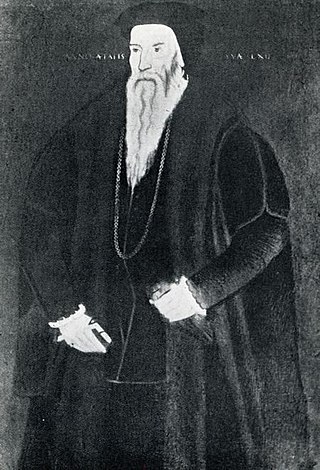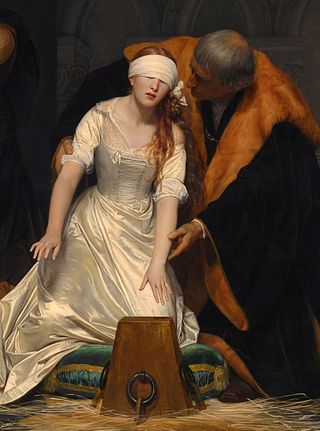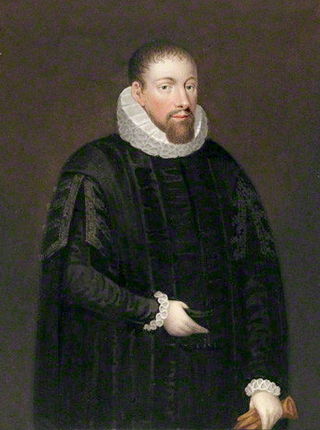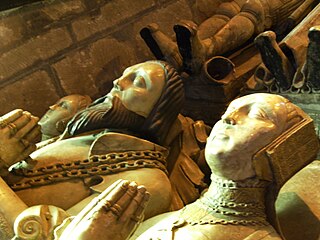
Azincourt is a commune in the Pas-de-Calais department in northern France. It is situated 12 miles north-west of Saint-Pol-sur-Ternoise on the D71 road between Hesdin and Fruges. It is often erroneously known as Agincourt in English, as the village had never been called as such throughout its history, however, there is a village that is named "Agincourt", located in the Meurthe-et-Moselle department in Eastern France.

Sir John Seymour, Knight banneret was an English soldier and a courtier who served both Henry VII and Henry VIII. Born into a prominent gentry family, he is best known as the father of Henry VIII's third wife, Jane Seymour, and hence grandfather of king Edward VI of England.

John Brydges, 1st Baron Chandos was an English courtier, Member of Parliament and later peer. His last name is also sometimes spelt Brugge or Bruges. He was a prominent figure at the English court during the reigns of Kings Henry VIII and Edward VI and of Queen Mary I.
Sir Richard Lee (1513–1575) was a military engineer in the service of Henry VIII of England, Edward VI and Elizabeth I. He was a commander of Henry VIII and appointed surveyor of the King's works. Lee was member of parliament for Hertfordshire in 1545. He was the first English engineer to be knighted.

Nicholas Vaux, 1st Baron Vaux of Harrowden was a soldier and courtier in England and an early member of the House of Commons. He was the son of Lancastrian loyalists Sir William Vaux of Harrowden and Katherine Penyson, a lady of the household of Queen Margaret of Anjou, wife of the Lancastrian king, Henry VI of England. Katherine was a daughter of Gregorio Panizzone of Courticelle, in Piedmont, Italy which was at that time subject to King René of Anjou, father of Queen Margaret of Anjou, as ruler of Provence. He grew up during the years of Yorkist rule and later served under the founder of the Tudor dynasty, Henry VII.
Sir Rhys Mansel, also Sir Rice Mansel, also Sir Rice Manxell, also Sir Rice Maunsell, Vice-Admiral, was High Sheriff of Glamorgan, a Commissioner of Peace and served as Chamberlain of Chester to King Henry VIII of England. He was High Sheriff of Glamorgan for 1542.
Calais was a former constituency of the Parliament of England.
Robert Radcliffe, 10th Baron Fitzwalter, 1st Earl of Sussex, KG, KB, PC, also spelt Radclyffe, Ratcliffe, Ratcliff, etc., was a prominent courtier and soldier during the reigns of Henry VII and Henry VIII, who served as Chamberlain of the Exchequer and Lord Great Chamberlain.

Sir Robert Broke SL was an English judge, politician and legal writer. Although a landowner in rural Shropshire, he made his fortune through more than 20 years' service to the City of London. MP for the City in five parliaments, he served as Speaker of the House of Commons in 1554. He is celebrated as the author of one of the Books of authority. A prominent religious conservative, he founded a notable recusant dynasty. His surname is also rendered Brooke, and occasionally Brook, which are, for modern readers, better indicators of pronunciation.
Sir Thomas Neville or Nevill was a younger son of George Neville, 4th Baron Bergavenny. He was a prominent lawyer and a trusted councillor of King Henry VIII, and was elected Speaker of the House of Commons in 1515.
John Neville, 3rd Baron Latimer was an English peer. His third wife was Catherine Parr, later queen of England.

Sir Anthony Wingfield KG, MP, of Letheringham, Suffolk, was an English soldier, politician, courtier and member of parliament. He was the Lord Lieutenant of Suffolk from 1551 to 1552, and Vice-Chamberlain of the Household in the reign of Edward VI.

Sir John Giffard, of Chillington in Brewood, was a soldier, courtier, member of the English Parliament and Staffordshire landowner, who made his mark mainly during the reign of Henry VIII.

Richard Corbet was an English landowner and politician who represented Shropshire in the parliaments of 1558 and 1563.
Sir William Hussey was an English politician.
Roger Corbet (c.1501–1538) was an English politician and landowner of the Tudor Period. A member of the Shropshire landed gentry, he represented the Borough of Truro in the English Reformation Parliament.

Reginald Corbet was a distinguished lawyer in four reigns across the mid-Tudor period, and prospered throughout, although he seems to have been firmly Protestant in sympathy. He was appointed serjeant-at-law and Justice of the King's Bench, and represented Much Wenlock in the parliament of 1542 and Shrewsbury in those of 1547, October 1553 and 1555. He enjoyed great wealth, partly because his wife was an heiress of Sir Rowland Hill, the first Protestant Lord Mayor of London.
Sir Anthony Hungerford of Down Ampney, Gloucestershire was an English soldier, sheriff, and courtier during the reign of Henry VIII of England, and briefly Member of Parliament for Gloucestershire.
Sir Walter Stonor was the son of Thomas Stoner of North Stoke, Oxfordshire and Sybilla, the daughter of Sir David Brecknock. He was a Knight of the Body and appointed Lieutenant of the Tower of London on 29 September 1546. He had at least three probable brothers, John, Edmund and Robert. He was knighted by Thomas Howard, then Earl of Surrey, after the Battle of Flodden in 1513. He died in 1551 with no male heir.
Henry Stafford was an English politician, the illegitimate son of Edward Stafford, 3rd Duke of Buckingham. He served as the Member of Parliament representing Stafford in 1545, 1547, October 1553 and 1555, but his later career is obscure.









